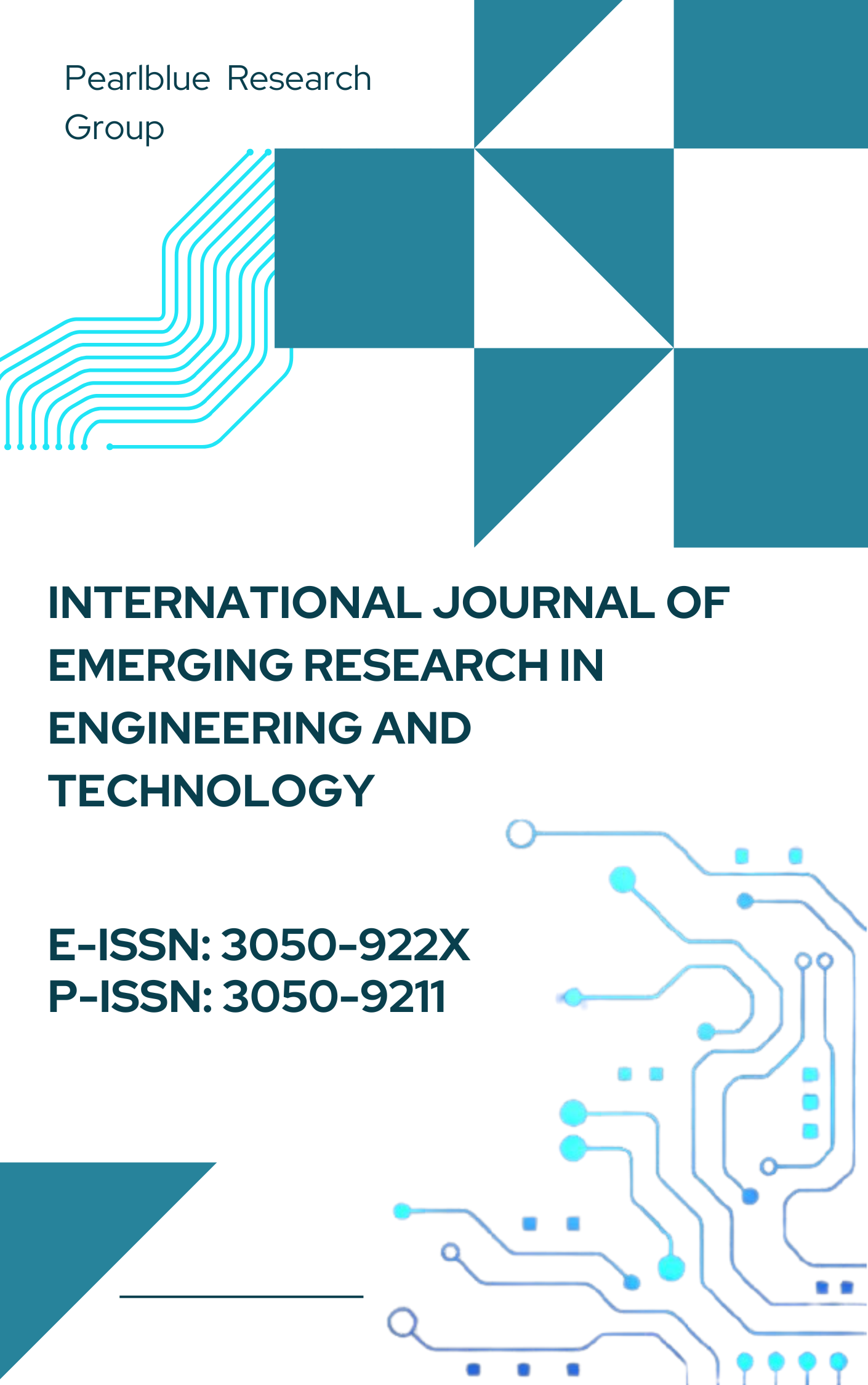Cyber Resilience through Zero-Trust Architectures: A Paradigm Shift
DOI:
https://doi.org/10.63282/3050-922X.IJERET-V1I3P102Keywords:
Zero Trust Architecture, Cyber Resilience, Network Security, Insider Threats, Data Protection, Micro-Segmentation, Compliance, Dynamic Threat DetectionAbstract
The evolution of Cybersecurity has necessitated a shift from traditional perimeter-based defenses to more resilient frameworks, notably Zero Trust Architecture (ZTA). This model operates on the principle of never trust, always verify, fundamentally redefining how organizations protect their digital assets. By eliminating implicit trust and continuously validating user identities and device integrity, ZTA mitigates risks associated with insider threats and external attacks. The architecture emphasizes micro-segmentation, where access to sensitive data is strictly controlled based on user roles and real-time risk assessments. This approach not only enhances visibility into user activities but also supports compliance with stringent data protection regulations. As organizations increasingly adopt cloud services and remote work environments, ZTA proves vital in securing these dispersed networks. The integration of advanced technologies such as artificial intelligence and machine learning further strengthens the resilience of cybersecurity measures by enabling dynamic threat detection and response. Ultimately, Zero Trust Architecture represents a transformative paradigm shift that empowers organizations to navigate the complexities of modern cyber threats while ensuring robust protection of their critical resources
References
[1] Object First. (n.d.). Zero trust security architecture. Retrieved from https://objectfirst.com/guides/data-security/zero-trust-security-architecture/
[2] PwC. (2020). Zero trust architecture: A paradigm shift. Retrieved from https://www.pwc.ch/en/publications/2020/ch-pwc-zero-trust-architecture-a-paradigm-shift.pdf
[3] (2023). Zero trust architecture. arXiv. Retrieved from https://arxiv.org/html/2312.02882v1
[4] Zero trust architecture: A paradigm shift in network security. TechRxiv. Retrieved from https://www.techrxiv.org/users/802617/articles/1187400-zero-trust-architecture-a-paradigm-shift-in-network-security
[5] National Institute of Standards and Technology (NIST). (2020). Zero trust architecture (NIST Special Publication 800-207). Retrieved from https://nvlpubs.nist.gov/nistpubs/specialpublications/NIST.SP.800-207.pdf
[6] Zero trust architecture. IJACT Journal. Retrieved from https://ijact.in/index.php/j/article/view/630?articlesBySimilarityPage=7
[7] Tata Consultancy Services (TCS). (n.d.). Enhancing cyber resilience with zero trust architecture. Retrieved from https://www.tcs.com/what-we-do/services/cybersecurity/blog/enhancing-cyber-resilience-zero-trust-architecture
[8] ResearchGate. (n.d.). Zero trust architecture: A paradigm shift in securing modern networks. Retrieved from https://www.researchgate.net/publication/385291074_Zero_Trust_Architecture_A_Paradigm_Shift_in_Securing_Modern_Networks
[9] CrowdStrike. (n.d.). Zero trust security. Retrieved from https://www.crowdstrike.com/en-us/cybersecurity-101/zero-trust-security/
[10] Microsoft. (n.d.). Zero trust. Retrieved from https://www.microsoft.com/en-in/security/business/zero-trust
[11] Check Point Software. (n.d.). 5 core principles of zero trust security. Retrieved from https://www.checkpoint.com/cyber-hub/network-security/what-is-zero-trust/5-core-principles-of-zero-trust-security/
[12] Zscaler. (n.d.). What is zero trust? Retrieved from https://www.zscaler.com/resources/security-terms-glossary/what-is-zero-trust
[13] National Institute of Standards and Technology (NIST). (2020). Zero trust architecture (NIST Special Publication 800-207). Retrieved from https://nvlpubs.nist.gov/nistpubs/specialpublications/NIST.SP.800-207.pdf
[14] Palo Alto Networks. (n.d.). What is a zero trust architecture? Retrieved from https://www.paloaltonetworks.com/cyberpedia/what-is-a-zero-trust-architecture
[15] Cimcor. (n.d.). The 3 zero trust principles. Retrieved from https://www.cimcor.com/blog/the-3-zero-trust-principles
[16] Cloudflare. (n.d.). What is zero trust? Retrieved from https://www.cloudflare.com/learning/security/glossary/what-is-zero-trust/
[17] AztechIT. (n.d.). Cyber resilience vs. cybersecurity. Retrieved from https://www.aztechit.co.uk/blog/cyber-resilience-vs-cyber-security
[18] Eurotech Conseil. (n.d.). Difference between cybersecurity and cyber resilience. Retrieved from https://www.eurotechconseil.com/en/blog/difference-between-cyber-security-and-cyber-resilience/
[19] Airiam. (n.d.). Cyber resilience vs. cybersecurity. Retrieved from https://airiam.com/blog/cyber-resilience-vs-cybersecurity/
[20] LinkedIn. (n.d.). Cybersecurity vs. cyber resilience: Analysis of importance. Retrieved from https://www.linkedin.com/pulse/cybersecurity-vs-cyber-resilience-analysis-importance-ts-dr-suresh-4txuc
[21] Ramsac. (n.d.). Cybersecurity vs. cyber resilience. Retrieved from https://www.ramsac.com/blog/cybersecurity-vs-cyber-resilience/
[22] DataCore. (n.d.). Cybersecurity vs. cyber resilience. Retrieved from https://www.datacore.com/glossary/cybersecurity-vs-cyber-resilience/
[23] BitSight. (n.d.). Cyber resilience vs. cybersecurity. Retrieved from https://www.bitsight.com/blog/cyber-resilience-vs-cybersecurity
[24] TechTarget. (n.d.). Why companies need cybersecurity and cyber resilience. Retrieved from https://www.techtarget.com/searchsecurity/tip/Why-companies-need-cybersecurity-and-cyber-resilience



